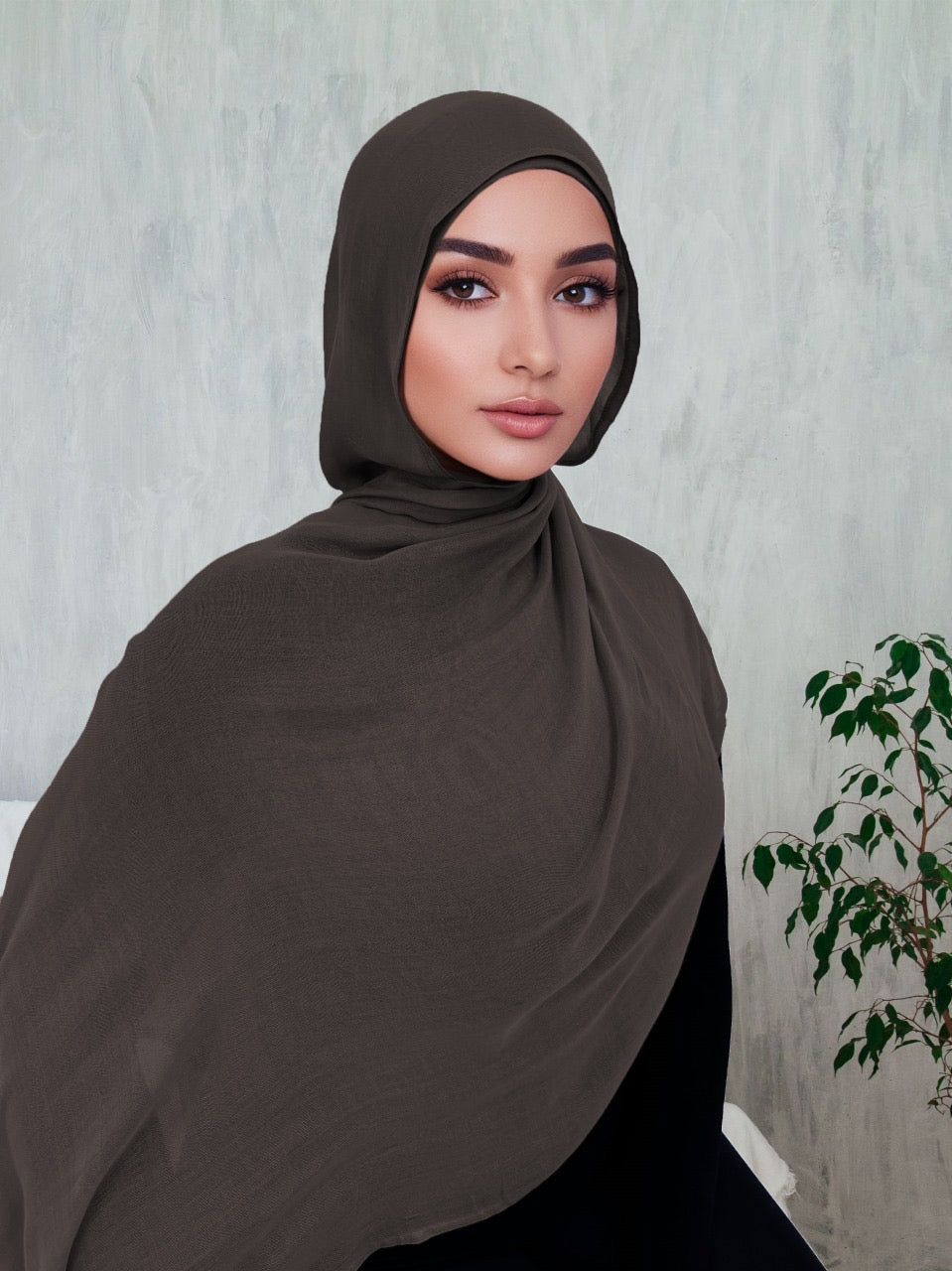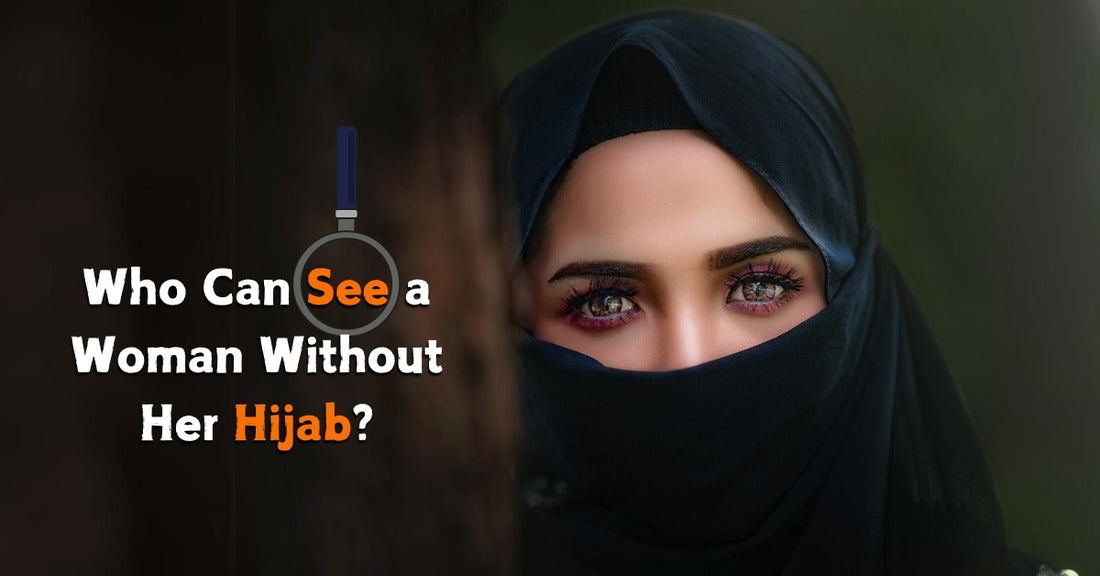In Islam, there are specific guidelines about who can see a woman without her hijab. According to Islamic teachings, a woman can remove her hijab in front of certain individuals. These include her immediate family members such as her father, brothers, husband, sons, and certain close female relatives. This permission is granted to ensure that modesty is maintained in public while still allowing for comfort and privacy in intimate family settings. Understanding these rules is crucial, as it helps to navigate social interactions while upholding religious values.
From my own experience, navigating the guidelines about wearing a hijab can be both enlightening and challenging. I remember a time when I was attending a family gathering and was conscious of who was present before deciding to remove my hijab. It highlighted how these guidelines are not just about adherence to rules but also about the personal comfort and respect within different settings. The hijab serves as a significant symbol of modesty and identity, and knowing when it’s appropriate to remove it helps in maintaining that balance.
Knowing who can see a woman without her hijab is important for both personal practice and for fostering respectful interactions with others. It ensures that religious practices are followed correctly while also helping those around understand and respect these practices. In this post, we will delve into who these people are, discuss the reasons behind these guidelines, and answer related questions to provide a comprehensive understanding of this important aspect of Islamic practice.
Understanding the Concept of Mahram in Islam
Definition of Mahram
In Islam, a mahram is someone with whom a woman has a close familial relationship, making marriage impossible. This term includes relatives like a father, brother, husband, son, and certain other close family members. A mahram is someone with whom a woman is not required to observe the same level of modesty as with non-mahram individuals. This concept is central to Islamic practice as it helps define the boundaries of modesty and social interactions.
Why Mahram Status Matters
Understanding who qualifies as a mahram is important for several reasons. Religiously, it ensures that modesty is observed in interactions with those outside the immediate family. Women are required to cover themselves more modestly in the presence of non-mahram men. Socially, recognizing mahram status helps maintain respectful and appropriate interactions in various settings. It also influences family dynamics and roles, shaping how family members interact and support one another. Identifying mahram individuals correctly ensures adherence to Islamic guidelines and fosters a respectful environment.
Who Can See a Woman Without Her Hijab?
Immediate Family Members
Immediate family members who are considered mahram include those with whom marriage is not allowed. This group consists of a woman's father, brothers, husband, sons, and sometimes her grandfather and uncles, depending on the family structure. These individuals are allowed to see a woman without her hijab because they are considered part of her closest family circle. The concept of mahram helps maintain privacy while allowing comfort in personal and family settings. It’s essential for respecting Islamic guidelines on modesty while ensuring family interactions are respectful and appropriate.
Extended Family Members
Extended family members who are also mahram include her paternal and maternal uncles and aunts, as well as her nephews and nieces. These relatives are generally considered mahram if they are not potential spouses. In the presence of these extended family members, a woman may feel comfortable removing her hijab, as they are part of her broader family network. However, the level of comfort and the practice may vary based on cultural practices and personal preferences.
Situations with Non-Mahrams
When interacting with non-mahram individuals, a woman is required to observe stricter guidelines on modesty. Non-mahram individuals are anyone who does not fall into the mahram categories. In these situations, a woman should keep her hijab on to maintain modesty. This includes interactions in public places, workplaces, and social events where non-mahram men may be present. The guidelines for these interactions aim to uphold Islamic principles of modesty while navigating various social contexts.
Exceptions and Special Cases
Children and the Elderly
When it comes to children and elderly individuals, the rules regarding hijab are generally more relaxed. Children are typically not required to follow the same modesty rules as adults. A woman can often remove her hijab in the presence of young children, as they are considered non-obligatory for maintaining modesty. Similarly, elderly individuals, especially those who are no longer of marriageable age or who are seen as family figures, are also exceptions. A woman might choose to remove her hijab around elderly relatives if they are considered part of her mahram circle or if the situation is comfortable and respectful.
Female Friends and Other Women
In the presence of female friends and other women, the guidelines for wearing the hijab are more relaxed. A woman can typically remove her hijab when she is with other women, as there is no requirement for modesty in this context. However, it’s important to note that cultural practices and personal preferences may influence how comfortably a woman feels about removing her hijab around other women. In general, the expectation is that modesty is maintained in mixed-gender settings, but among women, the rules are less stringent.
Medical and Emergency Situations
Medical and emergency situations present exceptions to the general rules of hijab. When visiting a doctor or undergoing medical procedures, especially if the professional is male, a woman might need to remove her hijab for practical reasons. In these cases, modesty is still important, but the primary focus is on providing or receiving necessary medical care. Similarly, during emergencies, such as accidents or urgent situations, the need to address immediate concerns may override the usual hijab guidelines. In both scenarios, the focus is on health and safety, and the requirements for modesty are adjusted accordingly.
Practical Tips for Observing Hijab Guidelines

How to Maintain Privacy
Maintaining privacy in mixed-gender settings can be challenging but manageable with a few strategies. Choose appropriate attire that ensures coverage even if you need to adjust your hijab. Opt for modest clothing that covers your body and complements your hijab. Be mindful of your surroundings and position yourself in areas where you feel comfortable. If you need to remove your hijab, do so in a private space whenever possible. Carry a scarf or wrap to easily cover up if needed. Planning ahead and being aware of your environment helps maintain your privacy while adhering to your hijab guidelines.
Navigating Social Gatherings
Handling social situations with non-mahrams requires a bit of planning and awareness. Understand the setting before attending a gathering. If it’s a mixed-gender event, prepare to keep your hijab on or dress modestly. Communicate your preferences politely if you’re unsure about the formality of the event. Find supportive friends or family who understand and respect your choices. If you must remove your hijab, look for designated areas where you can maintain privacy. Stay confident in your decisions and remember that maintaining modesty is a personal choice and an important part of your practice.
Educating Others About Your Boundaries
Communicating your boundaries about hijab can be done respectfully and effectively. Be clear and polite when discussing your practices with others. For instance, if someone asks why you wear the hijab, share your personal reasons or beliefs. Explain your needs regarding privacy and modesty in a friendly manner. If you are in a situation where you need to adjust your hijab, inform those around you beforehand to avoid discomfort. Use educational opportunities to gently explain the significance of your choices if appropriate. By setting clear and respectful boundaries, you help others understand and respect your practices.
What Should a Woman Do If Someone Inappropriately Sees Her Without Hijab?
Islamic Guidelines for Such Situations
Steps to Take According to Islamic Teachings
If someone sees a woman without her hijab inappropriately, Islamic teachings offer guidance on how to handle the situation. First, stay calm and avoid panicking. Cover up immediately if possible to maintain modesty. Seek forgiveness from Allah through sincere prayer and repentance. Reflect on the situation to understand what went wrong and how to prevent it in the future. It’s important to maintain your dignity and avoid blaming others. Islam emphasizes that everyone makes mistakes, and seeking forgiveness and correcting your actions is part of the faith.
Importance of Intent and Context
Intent and context play crucial roles in these situations. If the exposure was accidental or unintentional, it is essential to consider the circumstances before reacting. Focus on your intention to follow Islamic guidelines, and remember that mistakes can happen. Context helps in understanding the severity of the situation and responding appropriately. Clarify the situation with those involved if needed, and aim to resolve any misunderstandings with compassion and clarity.
Social and Emotional Considerations
Managing Social Repercussions
Being seen without hijab can lead to social repercussions. Address any concerns directly with those who saw you, if necessary, and explain the situation respectfully. Reaffirm your commitment to your practices to those around you. Avoid dwelling on negative reactions and instead focus on positive interactions and learning from the experience. Rebuild confidence by continuing to adhere to your hijab guidelines and demonstrating your values in other ways.
Emotional Support and Community Guidance
Seeking emotional support from family and friends is vital. Talk to those you trust about your feelings and get their advice. Community guidance can also be helpful. Engage with local support groups or religious leaders who can offer advice and reassurance. Remember that you are not alone, and many others face similar challenges. Build a support network that understands and respects your commitment to wearing the hijab. Their encouragement can help you navigate your emotions and strengthen your practice.
Conclusion
A woman can remove her hijab in front of immediate family members, certain extended family, and in specific contexts like medical situations. Understanding these guidelines helps maintain modesty while navigating various social settings. My advice is to always consider cultural practices and personal comfort when following these rules. Share your experiences or seek more information to deepen your understanding of Islamic practices related to hijab. Your insights can help others in similar situations.
FAQ
Can a woman show her hair to non-Muslim women?
Yes, a woman can show her hair to non-Muslim women. According to Islamic guidelines, the requirement to wear the hijab applies primarily in the presence of non-mahram men. When interacting with non-Muslim women, a woman may choose to remove her hijab if she feels comfortable. However, it’s always a personal choice and can depend on individual beliefs and cultural practices.
Are there any exceptions to the hijab rules during Hajj or Umrah?
During Hajj and Umrah, there are specific guidelines for hijab. Women are not required to cover their heads completely with a hijab while in the state of Ihram. Instead, they should wear modest clothing that covers their bodies, including their arms and legs. The key focus is on maintaining modesty and simplicity. Once out of Ihram, women should resume their usual hijab practices.
Can a woman remove her hijab in front of her young children?
Yes, a woman can remove her hijab in front of her young children. Children are not required to follow the same modesty rules as adults. Therefore, a woman may feel comfortable removing her hijab around them. This practice is generally accepted as it respects the privacy and comfort within the family setting.
What are the rules for wearing hijab in front of in-laws?
The rules for wearing hijab in front of in-laws can vary. Generally, a woman should wear her hijab in the presence of her husband’s male relatives, as they are considered non-mahram. However, she may remove her hijab in front of her husband's female relatives, such as his mother, sisters, or aunts, who are often considered mahram. It’s important to consider cultural practices and personal comfort levels while following these guidelines.


